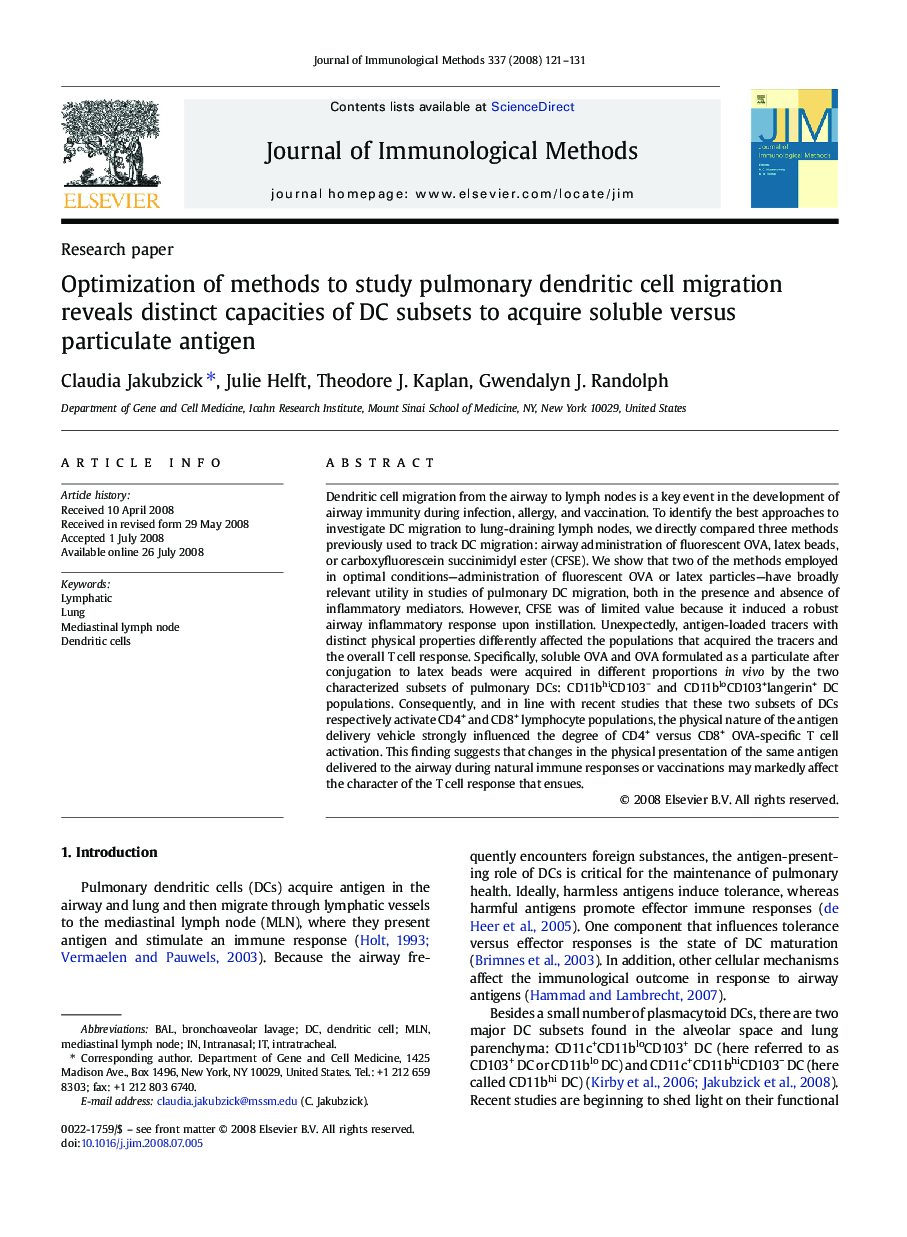| Article ID | Journal | Published Year | Pages | File Type |
|---|---|---|---|---|
| 2088899 | Journal of Immunological Methods | 2008 | 11 Pages |
Dendritic cell migration from the airway to lymph nodes is a key event in the development of airway immunity during infection, allergy, and vaccination. To identify the best approaches to investigate DC migration to lung-draining lymph nodes, we directly compared three methods previously used to track DC migration: airway administration of fluorescent OVA, latex beads, or carboxyfluorescein succinimidyl ester (CFSE). We show that two of the methods employed in optimal conditions—administration of fluorescent OVA or latex particles—have broadly relevant utility in studies of pulmonary DC migration, both in the presence and absence of inflammatory mediators. However, CFSE was of limited value because it induced a robust airway inflammatory response upon instillation. Unexpectedly, antigen-loaded tracers with distinct physical properties differently affected the populations that acquired the tracers and the overall T cell response. Specifically, soluble OVA and OVA formulated as a particulate after conjugation to latex beads were acquired in different proportions in vivo by the two characterized subsets of pulmonary DCs: CD11bhiCD103− and CD11bloCD103+langerin+ DC populations. Consequently, and in line with recent studies that these two subsets of DCs respectively activate CD4+ and CD8+ lymphocyte populations, the physical nature of the antigen delivery vehicle strongly influenced the degree of CD4+ versus CD8+ OVA-specific T cell activation. This finding suggests that changes in the physical presentation of the same antigen delivered to the airway during natural immune responses or vaccinations may markedly affect the character of the T cell response that ensues.
